
Here are the stats that show why banner ads deliver the lowest ROI in the digital marketing mix.
- Over 5.3 trillion display ads were served to U.S. users last year. (ComScore)
- That’s 1 trillion more than 2009. (ComScore)
- The typical Internet user is served 1,707 banner ads per month. (Comscore)
- Click-through rates are .1 percent. (DoubleClick)
- The 468 x 60 banner has a .04 percent click rate. (DoubleClick)
- An estimated 31 percent of ad impressions can’t be viewed by users. (Comscore)
- The display advertising Lumascape has 318 logos. (Luma Partners)
- 8 percent of Internet users account for 85 percent of clicks. (ComScore)
- Up to 50 percent of clicks on mobile banner ads are accidental. (GoldSpot Media)
- Mobile CPMs are 75 cents. (Kleiner Perkins)
- You’re 471 times more likely to survive a plane crash than click a banner ad. (Solve Media)
- 15 percent of people trust banner ads completely or somewhat, compared to 29 percent for TV ads. (eMarketer)
- 34 percent don’t trust banner ads at all or much, compared to 26 percent for magazine ads. (eMarketer)
- 25-34-year olds see 2,094 banner ads per month. (ComScore)
- 445 different advertisers delivered more than a billion banner ads in 2012. (ComScore)
Put simply, banner ads don't work
Remember these figures next time a media sales rep tries to sell you a banner ad campaign. Even if it’s free it may not be worth the effort, you’re 31 times more likely to win Lotto.
Read More
The A to Z of digital acronyms
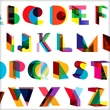
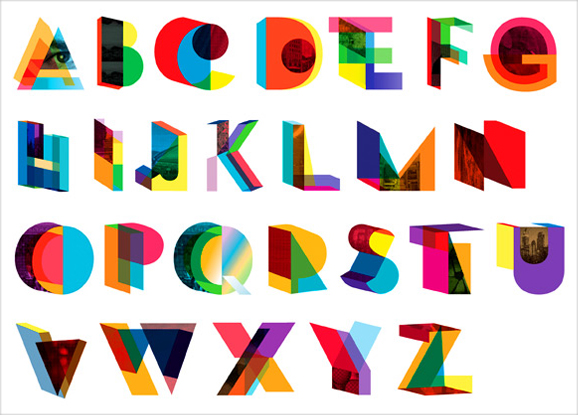
Every industry has its acronyms. With this list you will be prepared when dealing with people who speak digital:
AIDA - Attention, Interest, Desire, Action
AJAX - Asynchronous Javascript and XML
API - Application program interface
AOV - Average order value
AR - Augmented reality
ASP - Application service provider
ATD - Agency trading desk
B2B - Business to business
B2C - Business to consumer
CIO- Chief information officer
CLV - Customer lifetime value
CMS - Content management system
CPA - Cost per acquisition / action
CPC - Cost per click
CPL - Cost per lead
CPM - Cost per thousand
CPV - Cost per view (see also PPV)
CR - Conversion rate
CRM - Customer relationship management
CRO - Conversion rate optimisation
CSS - Cascading style sheets
CTA - Call to action
CTR - Click-through rate
CX - Customer experience
DM - Direct mail (or 'Direct message', in Twitter circles)
DMP - Data management platform
DNS - Domain name system
DR - Direct response
DSP - Demand-side platform
ECPM - Effective CPM
EPC - Earnings per click
EPM - Earnings per thousand
ESP - Email service provider
FAQs - Frequently asked questions
FB - Facebook
FBML - Facebook Markup Language
FTP - File transfer protocol
GA - Google Analytics
HIPPO - Highest paid person's opinion
HTML – Hyper Text Markup Language
HTTP - Hyper Text Transfer Protocol
HTTPS - Hyper Text Transfer Protocol Secure
IM - Instant Messaging
IMAP - Internet Message Access Protocol
IP - Intellectual property (or 'Internet Protocol')
IPTV - Internet protocol television
ISP - Internet service provider
KPI - Key performance indicator
LTV - Lifetime value
MoM - Month on month
MLM - Multi-level marketing
MVT - Multivariate testing
OEM - Original equipment manufacturer
OS - Operating system (sometimes this is used for 'open source')
PHP - PHP Hypertext Preprocessor
POP- Point of purchase
POS - Point of sale
PPC - Pay per click
PPL - Pay per lead
PPV - Pay per view
PR – Page rank
PV – Page views
QA - Quality assurance
QR Code - Quick response code
QS - Quality score
RFI - Request for information
RFP - Request for proposal
ROI - Return on investment
RON - Run of network
ROR - Ruby on Rails
ROS - Run of site
RSS - Really Simple Syndication
RT - Retweet
RTB - Real time bidding
RTD - Real time data
S2S - Server to server
SaaS - Software as a service
SEM - Search engine marketing
SEO - Search engine optimisation
SERP - Search engine results page
SLA - Service level agreement
SM - Social media
SME - Small / medium enterprise. (aka SMB = ‘business’)
SMM - Social media marketing
SMO - Social media optimisation
SMP - Social media platform
SMS - Short message service
SOV - Share of voice
SOW - Statement of work
SSL - Secure Sockets Layer
SSP - Supply-side platform
SWOT - Strengths, weaknesses, opportunities, threats
TLD - Top level domain
TOS - Terms of service
UCD - User-centric design
UI - User interface
UGC - User-generated content
URL - Uniform resource locator
USP - Unique selling proposition
UV - Unique visitor
UX - User experience
VOD - Video on demand
VM - Viral marketing
WC – Week commencing
WOMM - Word of mouth marketing
WYSIWYG - What you see is what you get
YOY - Year on year
YTD - Year to date
XML - Extensible Markup Language
I'm sure we've missed a few. Feel free to add your favourites in the comment box.
Where would you advertise if it was YOUR money?

I read recently, most entrepreneurs who are successful focus on realising their business concepts as well and as fast as they can. Worrying about how much money they will make comes a distant second.
Entrepreneurs focus on what the customer needs. The financial rewards follow if they have developed something that truly creates added value for their customers.
The advice industry is different. Advisors focus on what the customer will pay. Financial advisors charge you a percentage of what you have to invest. Not according to how they add value at the end of the financial year, which is what you actually need.
Last year the ASIC mystery shop of 64 financial advisors found only 2 gave “good” advice. 62 gave generic or bad advice, generally in line with their own interests, not the customers. While there’s no regulator doing mystery shopping of ad agencies or media shops, I suspect marketing services “advisors” wouldn’t score much better.
Digital media is commission driven
Media sales is still predominantly based on a cut of what you spend, not a share of your return on investment. Online ad-sales is the same model, just with a bigger margin from your spend. Some online adspace aggregators mark up inventory by 60%. For a 60% markup their computer serving of your ads has very little value add, let alone quality control. Look at this as an example of inappropriate adexchange placement – an ad for the Maquarie Graduate School of Management targeting women:
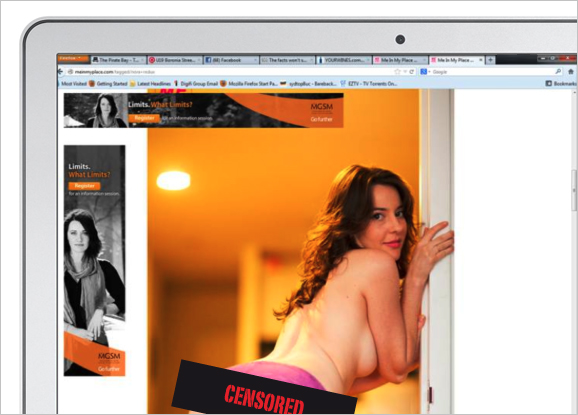
Every medium is out to convince you that their category is the best way to spend your money. They will always have a pie chart to prove it. It’s in their interest to have you spend more of your marketing pie with them. This will increase their commission, irrespective of whether it will increase your return.
For instance, Google Adwords looks a cheap way to buy eyeballs. But if your Adwords campaigner gets into a bidding war for the most popular keywords, you’ll spend more than the same number of leads from less popular search terms. Does the supplier care?
You might think the answer is to use media specialists who charge by time. Like lawyers, they’ll make more the longer their process drags on. More meetings, less decisions, the bigger your bill.
There are now more types of specialists than ever, each fighting for a bigger share of your budget – SEO, PPC, SEM, online content, online ads, email lists, data analysts, mobile, apps, ambient, ambush, experiential, waterproof stickers on urinals…
Which mediums are actually best for your business challenge?
I recommend looking at where to spend a clients’ money from this perspective:
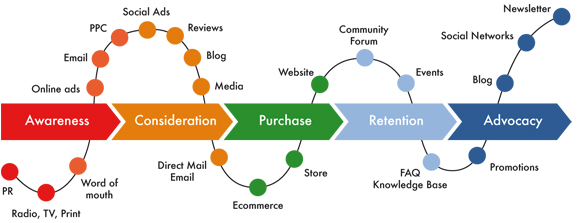
Synergy comes from the right mix, at the right time, with the right creative message. Beware commission driven specialists selling one solution to solve every problem. You’ll get less than you pay for.
Glenn Mabbott
Creative Director & Principal
UNOmarcomms
This article first appeared in AdNews
Read MoreSurvey reveals SMEs fail to measure ROI of online ads
A Yellow Pages survey of 1,800 Australian business owners* has found 69% of small and medium enterprises don’t measure the return on their online ad spend. What’s really surprising in this era of accountability is the finding that only one in 10 base their decisions on where to advertise on the ROI delivered.
What amazes me is the disconnect between business owners increasing desire to do more with less and the missed opportunities these findings reveal.
Advertisers keep telling me they love advertising online because it’s so much cheaper than traditional media. It might be cheaper to buy an adword campaign than a press ad, but are they getting a better return from those clicks?
Do you know which half of your advertising works?
The age-old saying “I know only half my advertising works, if only I knew which half” is just as true of online ad spending as off. The good news is it’s much easier to measure ROI of online marketing than the kinds of activities you used in the past. New technology makes it possible to know what works online and why. Business Intelligence means your spending can truly become an investment with predictable returns.
So if you count yourself amongst the majority of SMEs that don’t have a digital business strategy, maybe you should make it a priority to develop one. After all, there aren’t many things you can do so quickly and effectively that will leave the majority of your competitors behind.
How to measure your marketing ROI
New technologies have also made it much easier to track the performance of your offline advertising and promotion activities. We recently completed another test market campaign for an FMCG customer. In the past it was only major brands that could afford to put in place the kinds of tools needed to measure the ROI of integrated campaigns. Today even challenger brands can track the performance of programs that largely use traditional media because online research, scan data, real time field force reporting and analytics tools are no longer cost prohibitive.
The test and learn approach we have taken with this brand over the last few years has helped lift them above the pack. From being one of half a dozen small players competing for share against a long established multinational, our client is now a clear number 2 in their category. Do you know how much of your marcomms budget is working? There are no excuses because now you can.
* Survey published December 2010


"There are known knowns; there are things we know we know.
We also know there are known unknowns; that is to say, we know there are some things we do not know.
But there are also unknown unknowns – the ones we don’t know we don’t know."
While you may not like his politics, this famous quote from Donald Rumsfeld preceding the US invasion of Iraq perfectly sums up the dilemma faced by business owners today.
People are punch drunk from 5 years of relentless financial destruction of the world’s capital markets. Meanwhile, technology, and especially the digitisation of the world, has seen the pace of change of commerce reach incomprehensible pace. Is it any wonder business managers are floundering?
Challenger brands are making the most of this time of change to gain an advantage over competitors
Many business owners still think they can wait things out until things return to “normal.” What they don't know is the new model for success demands the ability to try new things, quickly and often.
Renee Todres heads a team of digital specialists at Tipping Point that have been helping businesses transform often complex transactions with their customers into simple ones. From BT to Elle Bache, once complicated business processes are being replaced with simple, intuitive interactions that make customers feel in control. Renee makes a wonderful observation –
"to learn you need to listen to yourself less."
Tipping Points approach is to add value by finding new insights. One way to succeed today is to recognise the limitations of your known knowns. Then seek out specialists that can help you discover the unknown unknowns. Get to know the ones that can help improve your position against your competition. And have the confidence to act on those new insights knowing the biggest threat to businesses today is business as usual. The Aussie attitude that she’ll be right now almost certainly guarantees failure.
I'm not suggesting spending all your energies on research. We’ve all seen managers fall into the paralysis by over-analysis trap. Too much data can actually hinder making effective business decisions. According to IBM’s 2012 global survey of 1700 CEOs, asking customers what matters to them is now more useful than financial analysis.
"Of course we need information and insight, but what we need most is the capability to act on it."
Unit head, Government, Hong Kong
In the words of Boston Consulting, today in business “the spoils go to the nimble.” We have found our challenger brand clients are winning by trying new and interesting things, fast and often. In the past you needed big budgets and big balls to try something different. There are now technologies that allow marketers to test new strategies while limiting financial risks.
As Renee and other niche specialists have shown me, it’s surprising how much there is to know that the big brands don’t, simply because they aren't looking.
Read MoreAll those for firing the Marketing Managers? Any against?


When they leave the office for the holidays, many marketing managers won’t realise their role may be restructured out of existence in the New Year. Over the Christmas break, CEOs around the country will be re-appraising who is an expendable cost to the business, versus who is an income generator.
Who will defend so many marketing managers when the case that has been building against them throughout 2012 is so strong?
Here is my snapshot of some of the evidence CEOs may be considering as they weigh up whether to fire their marketing managers:
Evidence A
Many of the tasks that CEOs thought only marketing managers could do can now be Googled. From 99 Designs to freelancer.com any CEO can buy marketing stuff cheap. Whether it’s designing websites or mailers, SEO or adwords, printing or promotions, everything is just a keyword search away. Who cares if you don’t know which half of your advertising works now you can buy it direct at third world prices?
Evidence B
According to this year's Roy Morgan annual professions ranking, marketers have failed again to rise much above used car salesmen. What CEO wants someone with less credibility than a real estate agent on their team? Consider this evidence alongside the growth in Australia of the casual workforce and outsourcing generally.
If you must have a marketing manager, why not buy by the hour, save on fixed and overhead costs.
Evidence C
CEOs have never believed marketers anyway. Fornaise regional survey of CEOs in 2011 found 75% did not value marketing managers opinions at a board level. In July this year the number had increased to 80%.
In November a follow up survey found seven in 10 CEOs hold themselves "somewhat responsible" for marketers’ poor perceived business performance because they have given up on holding their marketing managers accountable. CEOs gave up measuring the performance of their marketing managers. If it isn’t measurable, it won’t be long before the accountants decide marketing managers are an expensive indulgence a lean 21st century business can do without.
Evidence D
Business confidence is at it’s lowest level for four years. More companies went out of business in Australia in the last quarter than any other.
"She’ll be right" is now more wrong than ever. CEOs will have to change the way their business operates to survive. If they don’t know what marketing managers do, it’s an easy place for them to start cutting. As AdNews reported, one recruiter said recently, “companies want to hire revenue generators, and see marketers as passengers not drivers.“
Evidence E
How many CEOs actually know what marketing is? Consider one of the 4 Ps of marketing, price. In the FMCG industry, paying a rebate to Woolworths for a price promotion is still considered a marketing investment, not the sales tool it is.
Evidence F
Consider the other 3 Ps as they apply to businesses today. When do CEOs involve marketing managers in product development, or distribution innovation, or the building of a Business Intelligence driven CRM program? These new silos now fall under Strategy and Innovation Manager or the Supply Chain and Technology Integration Manager or the Chief Information Officer.
Is there a case for marketing managers?
The evidence doesn’t look good if the CEO doesn’t realise marketing managers can add value by thinking across silos. enabling the parts to work in synergy.
The Fornaise study found CEOs “think marketers have continuously failed to unquestionably and consistently prove in the boardroom that their marketing strategies, activities and campaigns generated actual business growth.”
To grow today you have to become a successful challenger brand. To be relevant today marketers have to champion at the board level the power of marketing to create a challenger brand.
If marketers aren’t in the boardroom, either the accountants, the salesmen, even the IT department will contend they need more of the budget to grow the business. Why not take it from the marketing pot, it’s just an artsy fartsy waste of money after all? Isn’t it?
12 days of vintage Christmas ads
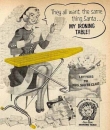
Have you heard about the uproar surrounding the latest 'sexist' Christmas ad for ASDA in the UK? Here's your chance in case you missed it.
It seems that history is repeating? Here's a fun look at UNO's 12 days of vintage Christmas ads. They certainly gave us a few laughs!
On the 1st day: What more could a girl ask for?!

On the 2nd day: Should you be tempted to over indulge...

On the 3rd day: What could it be?

On the 4th day: It's the thought that counts!

On the 5th day: The perfect stocking filler!

On the 6th day: Foam filled fun for all the family!

On the 7th day: Taking care of Christmas!

On the 8th day: A shame they didn't make them for dogs too?

On the 9th day: Say it with... spoons?
On the 10th day: We all know that Santa wears red and white because...
On the 11th day: We're sure ASDA would approve!

On the 12th day: Relax in the comfort of your own home
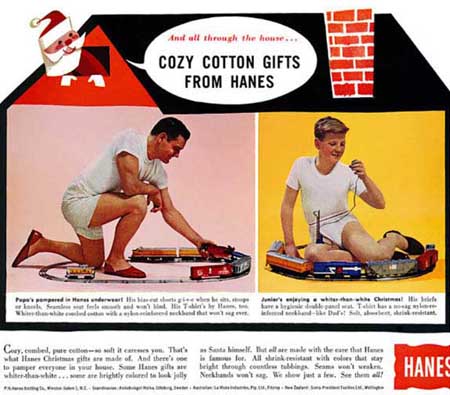
Oh what the heck! One more!
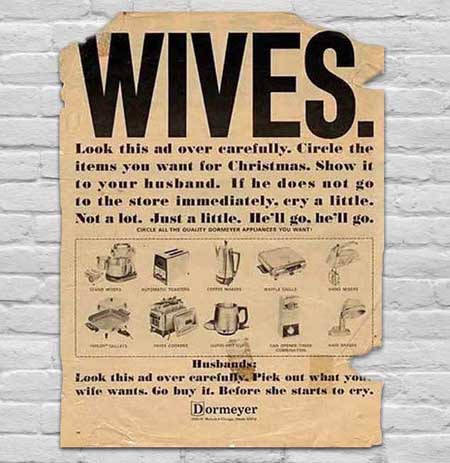
Big businesses' loss can be your gain
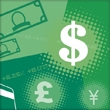
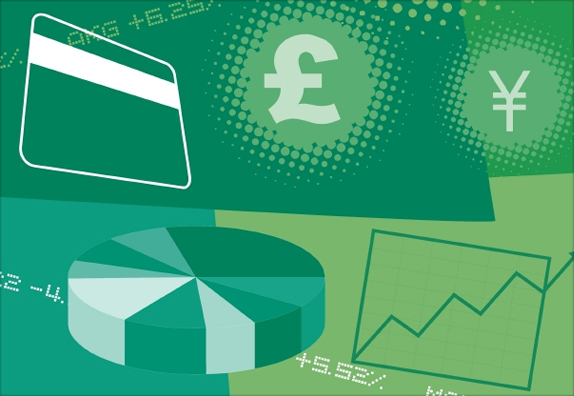
In the last few weeks business owners have been warned by the head of one of Australia’s biggest mining corporations that if we don’t change our business models we will die.
So who do business owners turn to for advice? In AdNews the marketing head of one of the big 4 banks reveals agencies don’t get digital. And the CEO of one of the biggest media planners in the country said "anyone in the media industry who claims they know what is happening is lying."
How many consultants does it take to change a light bulb?
Too late, fibre optics and LEDs have changed the market.
Every manager who has grown a business understands the value of seeking advice from specialists, you can’t be an expert at everything. Today we have the added problem that most so-called experts learnt their skills pre-Internet. Most business coaches are dinosaurs, as the world of commerce changes at ever increasing pace, conventional methods won’t save your business if the customer has evolved to a new way of life.
Think biz is tough? It’s even tougher for big businesses
Don’t panic. Unless you are number 1 in your category, you have less to lose by changing the way you play to fit in with the new rules that are being written by the customer. If you are a mid sized business today you have an advantage that in the past was a handicap. Yes, smaller is more nimble. Big businesses with big investments in infrastructure, systems and sunk costs can’t easily re-invent themselves. Think of all those silos of managers in big companies who have to hang in there for another 5 years because their super was decimated. They are a dead weight that slows down change.
Companies falling out of the top 3 in a given year:

Market share leaders that are the profitability leaders:

Forget the past, where’s the future profit coming from?
Most likely from something you are good at now, but not focused on. If you are a mid market player and still in business, you obviously have enough retained knowledge to draw on. Here are some examples of where UNO's clients have found profit opportunities:
- For a manufacturer it was cutting out the wholesalers.
- For a premium winemaker it is leaving Coles and Woollies to the major brands and growing high margin club membership.
- For a financial services B2B supplier it is repackaging bite-sized insights for the consumer market.
Today more than ever, get to know those who know
What you most need now is a trusted advisor who can draw upon a network of today’s specialists. To grow today, you need to re-invent your model, refresh your offer and relaunch by integrating traditional and new ways to market.
Forget incremental improvements. A few percent saved on input costs and a couple more from efficiency gains won’t save you when the competition pockets a whopping 30%+ of margin by removing an entire step in the route to market.
There’s an idea. Better to do it now, or be done over?
For a better career, get a life as a sponge

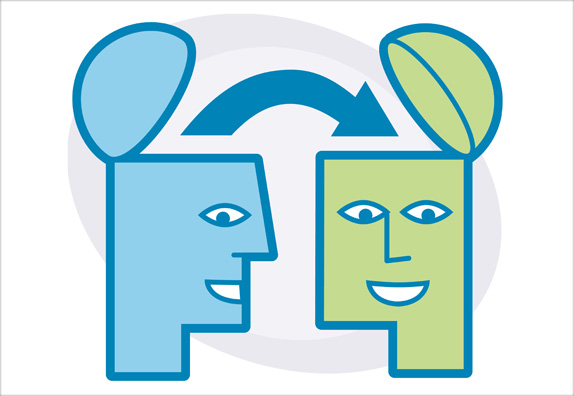
Many people in marketing seem to think they are judged on what they will do this week, while many managers think it’s about avoiding mistakes by doing very little. Rather than worry about what others may think of your actions/inactions in the short term, a recent conversation with a self-made squillionare reminded me of what it takes to become successful in business life. It’s not about you – soak up other people’s experiences.
Curiosity is the key
This founder of many businesses was as keen to ask questions about my challenges, as I was to learn about his successes.
Creative people continue to take the passive role of waiting for a brief, hoping the application of their current skills to their next project will bring the recognition they deserve. Meanwhile marketing managers act like thought police, determined to minimise all risks on their watch. So the brief ends up something like this: do something safe, measurable (as in lets make sure there are no nasty surprises), something a bit like someone else has already done, and all for less than it cost last time. This lack of desire to explore the unknown is killing creativity in Australia. Yet it’s creativity that builds wealth. Avoiding risk guarantees smaller returns, or none at all. Cutting margins does not create wealth, it just means you’ll spend your way to mediocrity a bit slower.
Today for a business to thrive it has to be a challenger brand. That’s an old company doing things in a different way, or a new one doing new and interesting things. Being a challenger is not about fine-tuning or polishing what you’ve always done. A business that’s in a well-worn smooth groove, just like a career, soon discovers it’s actually in a rut, going the wrong way. New isn’t always better, but better is always new.
If you’re curious to know what it takes to be better at what you do, you’ll do better than your peers. Curiousity, the squillionare says in one of his many books, is what it takes to succeed. It’s more than just appreciating that you don’t know everything. It’s wanting to know what Donald Rumsfeld memorably described as “the unknown unknowns.” Rather than selectively listening to those around you that you feel comfortable with, avoid making bad decisions by seeking out the wisdom beyond your network.
If you’re an art director, it’s time you hung around with some media gurus, marketing managers with entrepreneurs, accountants with digital user experience designers. Innovation after all comes from outside an industry, it’s not found fiddling around with what your category already does. And today if you don’t innovate you and the business will die.
I’ve often explained my life as that of a sponge. From childhood I wanted to know everything about everything. As I’ve met people with passions for things I know nothing about I’ve soaked up drops of wisdom. You’d be surprised what lateral connections from my sodden sponge can draw just the right drop, at the right time, to create an innovative answer. Whatever your role or experience, take every opportunity to learn from others. It helps to be open about your ignorance in front of experts. I’m always asking the silly questions. I usually find if they really are experts, they will gladly share their wisdom. Soak it up.
What's more important to CEOs - financial analysis, or customer insight?


We now work in a world awash with data. But too much data can actually hinder making effective business decisions. According to IBM’s 2012 global survey of 1700 CEOs, asking customers what matters to them is now more useful than financial analysis.
"This is now a continuous feedback kind of world, and we need the organizational nimbleness to respond."
CEO, Financial Markets, USA
"Of course we need information and insight, but what we need most is the capability to act on it."
Unit head, Government, Hong Kong
So how can you get to know your customers better? While there is no substitute for face-to-face, the survey found CEOs of outperforming businesses believe social media is the next best way to gather insights. More importantly, these insights are helping them take action.
In the words of Boston Consulting, today in business "the spoils go to the nimble."

The Lynx effect: Marketers need to help business managers focus on the long term.
Yes, the world is experiencing rapid change and it’s accelerating. However with the average tenure of management in companies constantly getting shorter, retained knowledge is being lost and long term plans are often abandoned before they have a chance to deliver returns. Short termism is rife, sales managers will always tend towards a quick fix to get orders in this month, and financial controllers will naturally be looking for new ways to reduce spending.
Yet the bottom line is it's the businesses that invest year after year in building brands that create the most wealth. The chart below compares the S&P 500 index performance, the blue line, with businesses that own stronger brands, the green line. It proves the businesses that invest in brand building ultimately generate more wealth for shareholders.
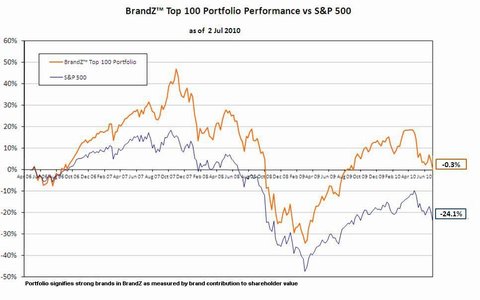
Leading brands outperform the sharemarket
A great example of how building a brand over time makes more money is to look at the work BBH in London did for Unilever. The creative leap of saying a deodorant could make a man more attractive changed the dynamics of the market category. The ad agency took an also ran product to a profit powerhouse over 20 years with the one consistent creative idea; “The Lynx effect”.

Founder of BBH Sir John Heggarty says “All we did [back in 1995] was change the thinking. It’s more than a fragrance – anyone can make a fragrance – it’s actually about the marketing.”
"I fundamentally disagree that advertising is just selling people stuff they don’t want. I believe that you have to create a competitive advantage with creativity. It seems obvious but I spend so much of my time trying to convince marketers to be more creative.”
Marketing is more art than science says the global advertising guru
Last week in Sydney Heggarty told a room full of businesspeople and advertisers “you all want it to be a science, to get the equation right and go home. But selling stuff has never been a science, it’s about persuasion and it’s an art. It will never be a science. It’s important to remember that we’re all creative. If you’re in marketing, you’re creative.”
Branding today is worth more to a business than ever before
Here is the proof for the finance department. According to Millward Brown Optimor’s analysis, in 1980 virtually the entire value of an average S&P 500 company was comprised of tangible assets (computers, factories, inventory, etc). By 2010, tangible assets accounted for only 30 to 40 percent of a company’s value. The rest is intangible value, and about half of that intangible portion, close to 30 percent of total business value, is attributed to brands. Does your CFO treat your own brand as your single biggest asset?
It truly is the era of creative destruction. ROI marketing is one of the few tools left that can still make a difference and consistently drive business growth. It's worth investing in your brand if you want long term returns.
Read MoreHow many ads do we see a day? Do you remember any?

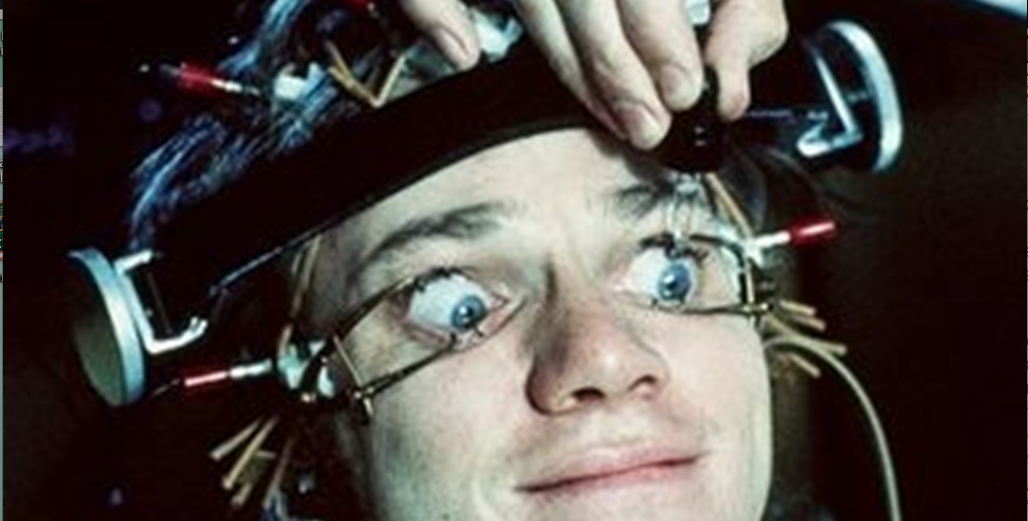
"We've gone from being exposed to about 500 ads a day back in the 1970s to as many as 5,000 a day today."
Jay Walker-Smith, Yankelovich Consumer Research
Hard to believe? Well, if you include the brand label on your undies when you put them on in the morning to the box your new tube of toothpaste came in that evening you can conceive you are exposed to branding messages thousands of times a day. This researcher also counted all the junk mail you probably don't read. But 5,000 ads?
A more reasonable figure for the marketing messages you see and hear daily is probably in the hundreds. Think about your average day, from the traffic report brought to you by Bob Jane T-Mart, the bus back for some show at The Star to the flyer for a Thai massage thrust in your hands as you walk past the poster for all-you-can-eat ribs on Wednesday nights. Then a barrage of down down retail ads on the TV during My Kitchen Rules, sponsored by some diet program. And those meet women in your area now!! ads on the side of your Facebook page late in the evening? What’s that about?
Whether it’s 300 or 3,000, we see so much that we register very little – and remember even less.
So if you were advertising your business don’t you think it might be wise to be distinctive and consistent enough to be recognised for something? Of course you would. So why is it most marketing communications is neither memorable nor consistent? Why doesn’t Qantas still call Australia home?
Why would an insurance company kill off its leading actors?
I can understand why an insurance company is killing off a 3 year ad campaign featuring Rhonda who now has a full time gig in a soap, but why did they drop the memorable jingle earlier? What have they got left to ensure we remember their brand? Who was that insurance company you may well ask? Ahhhhh, Allianz? No, when I double checked it was AAMI. You'd be forgiven if you haven’t been paying attention. Instead of keeping the sign off, "Luckyyyy, your with AAMIeeee", the ads no longer end with the sound of the jingle we’ve grown familiar with over 15+ years. Wonder why?

The average tenure of the CEO of an ASX 200 company is around 4-5 years*. The head marketer changes almost as often. Those brand managers on their way up move through more often, leaving behind their mark like my pug does on street posts. Which explains why the labels on all those Lindemans wines changed so often over the last decade. Southcorp then Treasury have destroyed so much brand equity because there were no custodians with a strong thread of brand DNA. Then each new agency wants to make its name, often at the expense of the advertiser.
Why will anyone remember your brand?
I was part of the team that created the "Which bank?" campaign for Commonwealth. It outlasted my time at Saatchi and survived a change of agency, despite their attempts to get rid of it. Brand building is like compound interest, you add a bit every year. And after a while it’s worth a fortune.
'Oh what a feeling' to be a copywriter for Toyota, knowing whatever the concept you come up with, the last 25 years of ads ensure the jump at the end will guarantee recognition by a half asleep viewer. Which is why the most successful marketing campaigns are the ones with legs. They go on and on like a Duracell battery.
It’s a fine balance between testing the new and stretching the offer without breaking the elastic brand. Some brands get it right. While there have been numerous small tweaks and occasional lapses, the VB can and the Coke dynamic-ribbon have survived decades of personnel changes. Less strongly managed brands seem to change annually. So when clients tell me they are getting tired of their campaign or their tag line or the font of their logo, I like to check if it’s busted first.
Sure we live in a world of rapid change, however, it’s more likely business survival and growth will come from product and service innovation and smarter marketing techniques, not from a new typeface. It may be a better strategy to refresh and re-launch rather than completely start again if you want to hold on to some rare customer goodwill. You’re doing well if they already have a small place for your brand pegged out in their cluttered head space.
Mortein tried to kill off Louie the Fly, but after over 50 years the public would have none of it. As John Laws used to say, when you’re on a good thing, stick to it.
Here's a Louie the fly ad from 1962
* Source: A Booz & Company study shows 23.5% of CEOs of ASX 200 companies left in 2011. Median tenure is 4.4 years and falling.
Read MoreThe top 20 valued brands in 2014
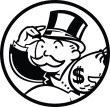
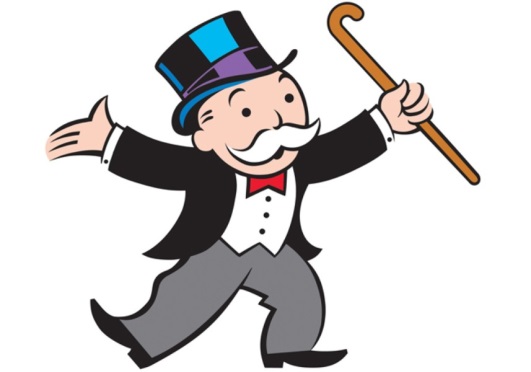
The world's most valued brands include some surprises. Coke is no longer it, in fact in the last year the brand value of Coca Cola has actually shrunk by 1%. Might not sound like much, but we are talking US$50million. A few more great ads like they used to make could have made a big difference to the bottom line. While there's a lot to lose there is a lot to be made by building a brand.
Innovation and marketing build brand value
Consider the year on year growth of Samsung as it continues to invest in product innovation and marketing. Now the number 2 in the world by brand valuation, Samsung increased it's value by US$20 billion over the last year. Coke slipped from number 9 to 12. Check out US telco Verizon, up from 10 to 5. Expect to hear more from them in Australia.
What are the highest valued Australian brands?
The value of a brand can be greater than the parts and isn't necessarily a reflection of the relative size of the business. While Australia's largest listed company by share market value is BHP, it doesn't rate on the scale for the book value of it's brand. The business with the highest valued brand in Australia is Woolworths. Woolworths sold $21 billion of food and liquor last year. The Woolworths brand is now ranked just outside the top 100 global brands and is valued at US$10.8 billion.
Racing up behind in second place is a newly invigorated Telstra which has re-invested, refreshed and relaunched it's brand over the past couple of years. The several millions spent on marketing has been rewarded, Telstra jumping 34 spots globally with an increase in brand value of over US$2.2 billion.
The banks brand valuations aren't the same as their market cap, but the shifts in brand value are a leading indicator of performance. ANZ is the smaller of the big 4 banks yet it has had a higher brand valuation for the last few years. But it's slipping, which helps give us an idea of which bank will grow faster in the coming years. ANZ, NAB and CommBank are all losing brand value and Westpac is climbing as they leverage stronger brand appeal to hold and grow customers.
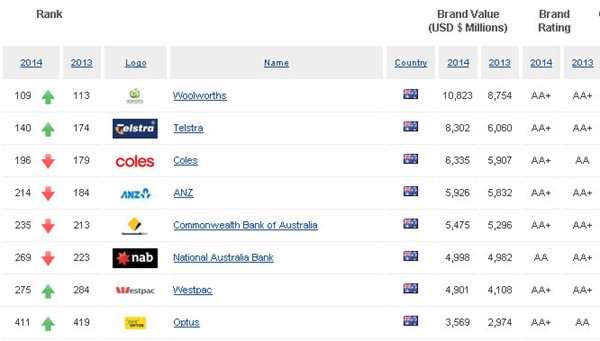
So when you're in the boardroom discussing the pros and cons of discounting to drive sales or investing in marketing, show your peers what a difference a brand makes to the bottom line.
Read MoreThe business benefits of a strong brand
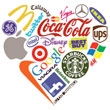
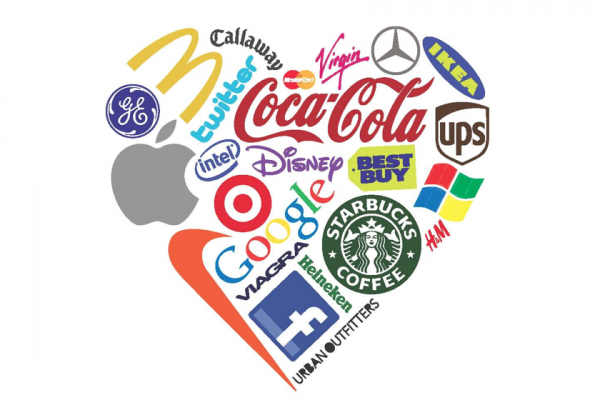
Remember just over a decade ago when IBM only sold big computers? Today most of us have more computing power on our smartphone and IBM is a consulting services business. UNO helped IBM make the transition to a service provider to mid-sized Australian businesses with a 4 year content publishing programme.
Many brands are having to change to survive
A few years ago if you wanted to find a business service you looked up the Yellow Pages. And if you wanted to make a call when you were out of the office you had to find a pay phone. It's amazing when you stop and think about how much the Internet has changed the way we do business.
Some once mighty brands like Kodak and Darrel Lea have disappeared, while others have successfully transformed what they offer. Have you taken the time to reconsider what your brand stands for in today's competitive market?
A brand is more than a name and logo
Your brand is what the public thinks you stand for. How you present your business shapes how your brand is perceived. Your brand is how your customers feel about you – the impression you make. It's how you look and how the way you speak. It's the unique way you reveal yourself to customers, from your choice of words to the typeface and colours you use.
If your business has been around for a decade then what your business does may no longer be well represented by what your brand is representing. Today's brands are distinctive yet flexible. Consider wWhat do Apple, Google and Virgin have in common? An ability to sell products and services across virtually any category by leveraging strong brand images that represent values that can be stretched as innovations are brought to market.
Strong branding is a smart business investment
Disciplined brand creation and consistant brand marketing is proven to deliver returns. Once you've differentiated your brand positioning, today you need to remember sales is no longer a linear pipeline, the power now lies with the customer. So for your brand to create wealth it needs to be discoverable across multiple touchpoints. With consistancy, the ROI from building a differentiated brand isn't just financial.
A strong differentiated brand enables the business to:
• Overcome competition based purely on price
• Prevent or slow decline of sales
• Hold on to existing customers
• Build sales leads
• Change perceived quality of your product
• Revitalise customer appeal
• Change company culture and boost employee morale
• Enter new markets
• Speed up product acceptance and trial
• Morally discourage competitors’ salespeople
• Raise capital more easily
• Sell a business more easily
See UNO's proven Formula for Growing Challenger Brands.
Read MoreWho owns the world's best known brands?

"Brands are intangible assets and account for, on average, 75% of the value of a company."
– Blake Deutsch
Investors don't value what businesses make. The sharemarkets around the world have placed the most value not on production, rather they value the power of brands. Most share prices are a reflection of the future earning ability of a brand. The brands people most recognise also get the most votes from investors.
Just ten global companies own a surprising number of the world's best known brands.
From cat food to confectionary, shampoo to fragrances, each of these companies use their marketing skills to create shareholder value. As well as the dairy brands you probably associate with Nestle, the Swiss company also owns some of the most renowned brands in other diverse categories. Most people are surprised to see just how many categories just ten global corporations are active in. (View on Pinterest):
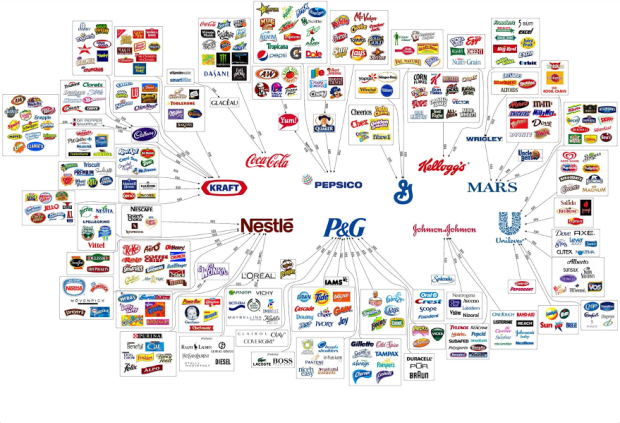
See larger image on Pinterest.
The big benefit of differentiating your brand is pricing power
The same marketing disciplines that are used to by Nestle to differentiate Kit Kat are leveraged by Nestle in other categories like fragrance. Georgio Armani Beauty is a Nestle brand, with Cate Blanchett its public face. Differentiation is why Nestle can charge a premium for perfume, Purina pet food and Nespresso coffee capsules.
In an Internet enabled world, where prospects can literally buy anything from anyone, it is now essential to differentiate your brand. It is differentiation that will ensure long term sustainable and profitable business.
Big brands have the world covered, which opens market niches to the nimble
The good news for challenger brands is the majors have slimmed down their portfolios over the last decade to concentrate on a smaller number of brands they can manage globally. So if you now apply the same proven brand marketing disciplines in niche markets you can most likely do so knowing there will be less competition from big global players.
As for Armani the fashion brand, it's still a family owned business with Georgio, it's 78 year old founder, still at the head. See how UNO grows Challenger Brands, including a number of successful Australian family businesses, just download our free eBook.
“Brands are intangible assets and account for, on average, 75% of the value of a company.” - Blake Deutsch - See more at: http://www.r-co.com.au/brand-building-for-business-success/#sthash.XGEEw6MT.dpuf
Who tweets about brands?
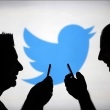
Technology companies get the most tweets
If Twitter users are image shapers, setting the trends in awareness in our society, it follows that marketers want to see their brands tweeted. Research by Nielsen has for the first time shown which brand categories are most tweeted, and who is doing the tweeting. Technology companies lead, followed by restaurants.
How to get people tweeting about your brand?
Be seen on TV. The age old adage, fame is the name of the brand game is underlined by the fact the brands people tweet about are the brands seen on what is still the world's mass market medium – TV. Perhaps this explains why the biggest brands still invest in TV advertising, it's the one medium that they can still use to shape mass opinion.
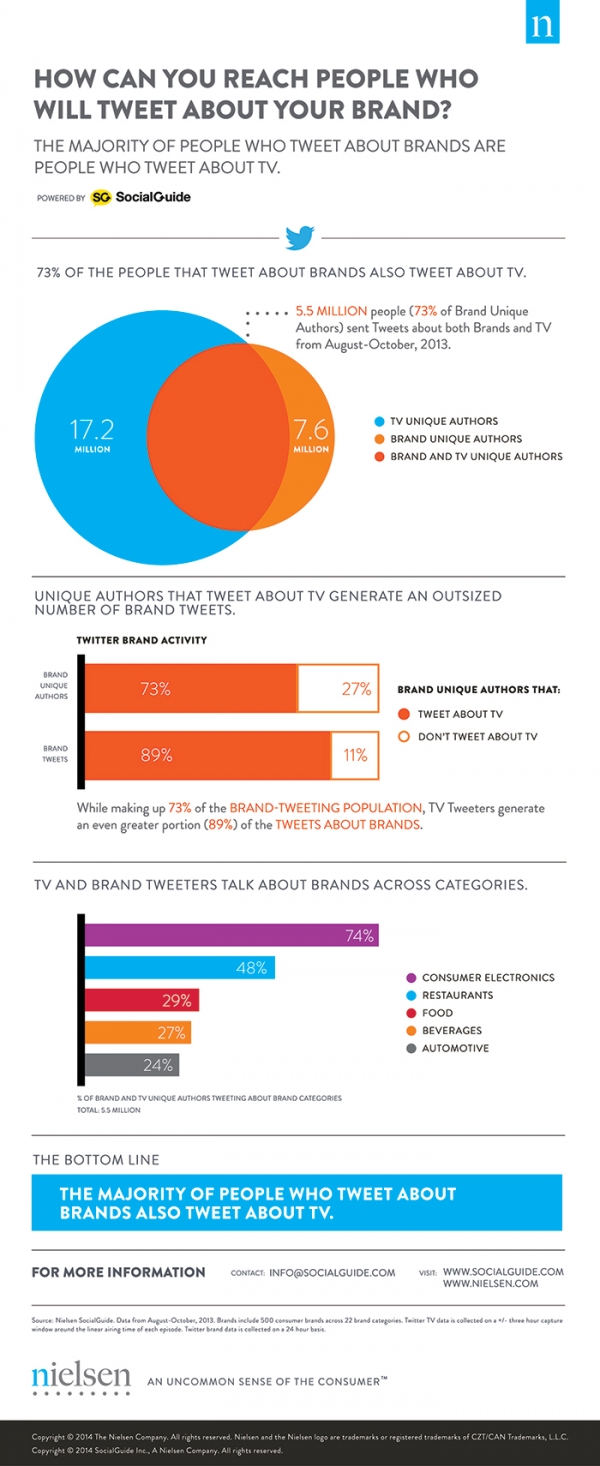
What Australians look for when shopping online

Myer missed the post-Christmas online retail rush, and it was BIG. On 1 January, The Australian Retailers Association put an update out on expected post-Christmas sales from Boxing Day to 14 January to be $15.1 billion.
You may have read Myer's site was down for over a week. CEO Bernie Brookes told shareholders it wasn't a big deal because online represents just 1% of Myers sales. I'd be wary of investing in a retail business that doesn't realise the importance of e-commerce.
6.4% or retail shopping is done online
In the year to November 2013, Australians spent $14.6 billion* on online retail. This level is equivalent to 6.4% of spending with traditional bricks & mortar retailers. Some discretionary spending categories are already well into the double digits for online sales. Despite Bernie's spin about the insignificance of his own online sales, in fact Myer's business plan has a 5 year target for online sales of 10%.
I've been brushing up on online retail best-practice
Those retailers that did get a share of the online post-Christmas sales rush now have stats on what worked for them. Fortunately we can all learn from what Australians did over Christmas thanks to a survey by Credit Card Selector of online gift purchases. Here are some of the insights on what shoppers are seeking online...
Why Australians purchased Christmas gifts online rather than instore
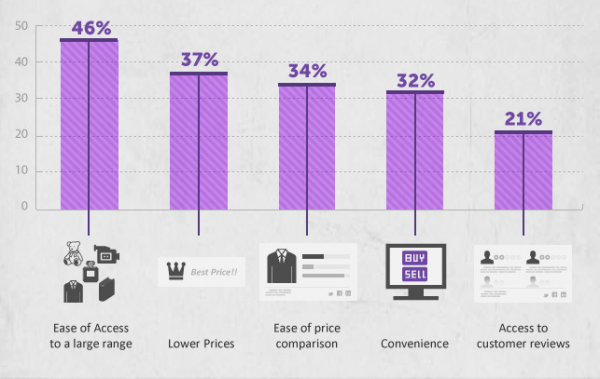
How shoppers find online stores
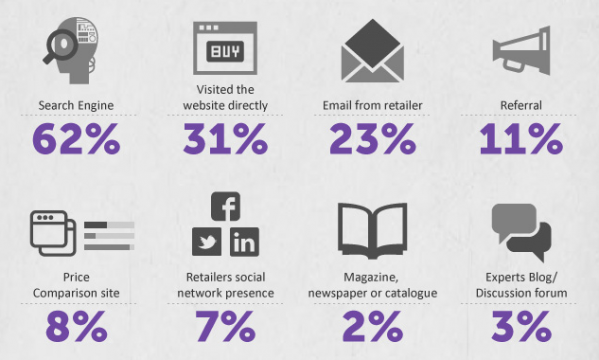
What gifts shoppers bought online in 2013
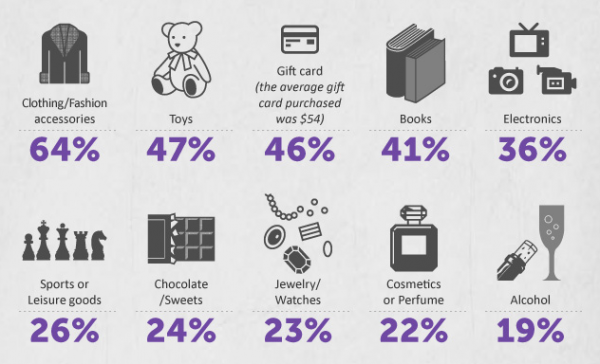
What would make an online shopper buy again
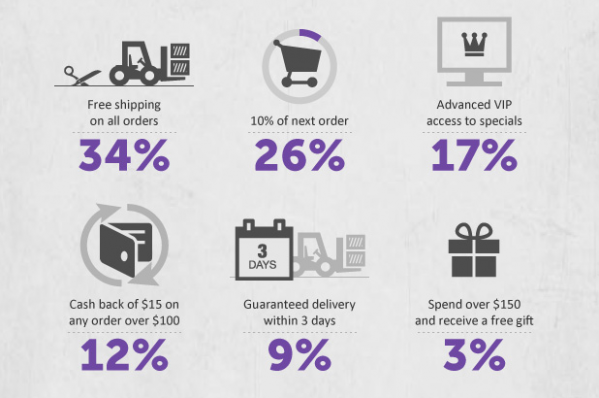
* Source: NAB Retail Index
Read MoreHow can you measure a marketer's contribution to the business?

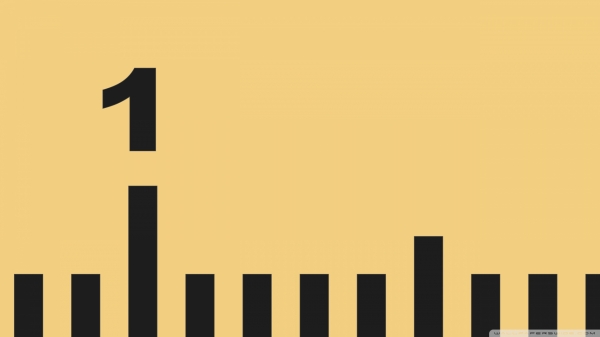
CEOs and business owners often ask me what’s the best way for them to measure my contribution to their business. The business of business has never been more complex, yet we are actually in an era where marketing is one of the few levers left that management can actually control to engage customers. And that’s how a marketer is best judged – by the improvement of the brand’s engagement with customers.
Marketing is all about the customer. The customer
Don’t just take my word for it.
A survey of CMOs across 92 countries reveals consensus – the most valuable measures of marketing’s contribution are in the areas of engagement and “brand health”. Health being a bit of a catchall word for the grab bag of KPIs that show how much customers recognise you, like you, value and understand what you stand for. They also ranked the capabilities that will be more important to marketers over the next 5 years.
KPIs for measuring marketing effectiveness
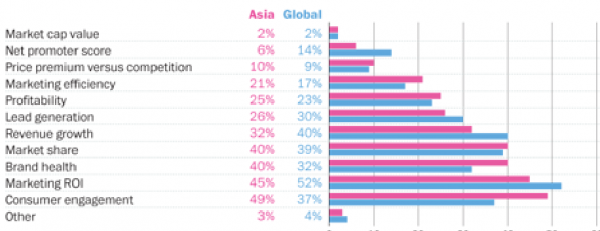
Source: The Marketing 2020 Report, Effective Brands survey of 10,000 professionals across 92 countrie
The capabilities most important for marketers in 5 years
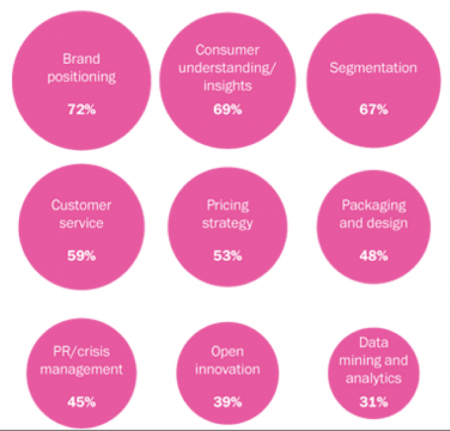
How to manage the 9 biggest marketing challenges
Here is how we manage the biggest marketing challenges today:
- What do you stand for?
Define your differentiated positioning in the market that not only you have a passion for, enough prospects will pay for. - Know your customer
Base your story on what customers genuinely care about that you can deliver. The features with benefits that ideally are unmet by competitors, or unknown to prospects. Think like a challenger brand. - Define your target audiences
Don’t attempt to sell something to everyone. It’s the era of niches within subgroups. Align your messages to what each customer target cares about. - Customer service
Never over promise, always over deliver on expectations.See some of the proven ways to foster customer loyalty here. - Pricing strategy
Remember pricing is a two way lever, framing value to maximise profit is the game, not cost plus pricing, that was the era of mass market production line manufacturing. Be nimble and exploit unique profit opportunities from short term market mispricing. Then find another. - Packaging and design
Sell the sizzle. Creativity and a consistent brand image increases cut through, recall and engagement and helps you command a price premium. Bad ads are bad for business. Stand out and apart. Safe isn’t just boring, it’s high risk. - Be prepared for a crisis
The Internet now makes everything public and places the power in the customer’s hands. Have a plan. Tell the truth, you’ll be outed if you don’t. Make sure you know your legal position with social media. - Innovate for growth
Or die. Big business struggles to change, this is the great advantage for those who aren’t market leaders. Become a challenger brand by zigging while the category zags. See the bottom line benefits of innovation as determined by AIM, they are significant. - Data
We are now in a digitised world. The companies that have the most data on people have the power to own their custom. Whether you are a manufacturer, distributer, service business or retailer, the business that makes the most of data will control the money.
Read More
Email outperforms social media for new business, by far


McKinsey has just published some research I wrote about last year on the ineffectiveness of social media for customer acquisition. While marketers have increasingly jumped on the social media bandwagon, the stats show the effectiveness of Facebook and Twitter as a method of acquiring customers has remained flat. In contrast, email’s share of customer acquisitions has shot up over the last three years by 700%.
% of customers acquired by channel
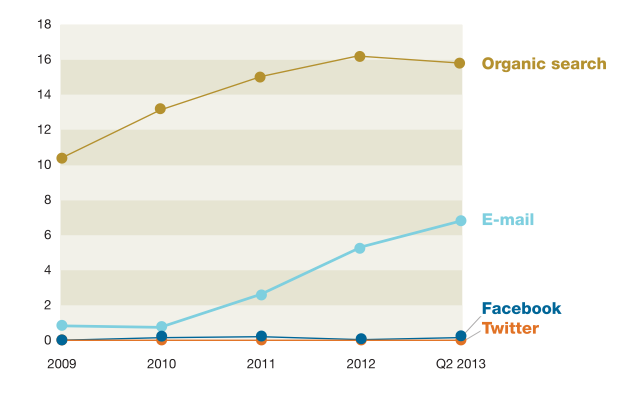
Source: Custora, E-Commerce Customer Acquisition Snapshot, 2013. McKinsey iConsumer survey
The tip for challenger brands here is to zig when the others zag. The more your competition and every other marketer swamp social media with activity, the less likely you will be noticed. Personally, every time I now venture onto Facebook I am actually getting rather tired of being targeted by advertisers for diets, wine and dating.
Facebook is out of favour for new business
In the quest to deliver Facebook shareholders a profit, marketers are being encouraged to spend big. Meanwhile Facebook users are beginning to move on. The statistics show us those marketers who continue using email can expect 40 times the customer acquisition than from Facebook and Twitter combined.
That's not to say I'm recommending mass email blasts. The frequency of spam in your inbox is why marketers now have to be more discerning in what they send and who they send it to. For instance, Qantas has a frequent flyer database of 10 million members, slicing and dicing and and segmenting offers with hundreds of individual creative executions.
When Email marketing, remember what’s in it for the customer
Most of us hate spam. Prospects and customers however generally appreciate receiving an email when it concerns something of value to them. Depending on your category, different days of the week achieve higher responses. And of course, research on brand recall has proven the more creative your message, the more your brand will be remembered.
So make sure your email campaigns are well crafted and you offer a real benefit aligned to a genuine customer need. In other words, smart marketing not spam.
Read MoreHow Private Label hollows out brands

Australia is unique for the oligopolistic power of just two supermarkets. Coles and Woolworths have 80% market share of an industry valued at A$80+ billion.
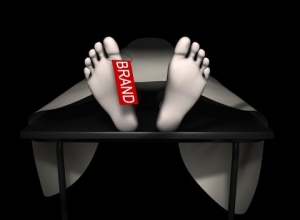 In the UK, the two major chains Tesco and Sainsbury have 48% and the US equivalent is just 20%. Consequently when our retailers brought in management from the UK to apply the successful Private Label model developed by Tesco and Asda they did so with the potential to have a significantly bigger impact on our market overall.
In the UK, the two major chains Tesco and Sainsbury have 48% and the US equivalent is just 20%. Consequently when our retailers brought in management from the UK to apply the successful Private Label model developed by Tesco and Asda they did so with the potential to have a significantly bigger impact on our market overall.
Private label is no longer cheap generic Black & Gold commodity lines, it's the key to the retailers growing profit at the expense of both brands and producers. Whether you are in the FMCG business or a service business, the Private Label strategy is one that threatens every business as the company with the most customer data gains ownership of the sales process.
Global FMCG brands now struggle to turn a profit in Australia
In the last year major FMCG brand owners like Unilever and Nestle have publicly lamented their lack of power in this country to compete with the oligopoly's own brand agenda. While we have more supermarkets per capita than the US and nearly 3 times as many as the UK, the 10,000 Australian independents have so little share and such disparate distribution requirements for fulfilment they offer brands little scope for profitable scale.
Most shoppers don't realise they're being had
The trend to consumer demand for more brand choice and gourmet choices is being matched by Woolworths by it's purchase of Macro Wholefoods and roll out of Thomas Dux stores. Not only have Woolies out-merchandised the Harris Farm model, they've done an even better job in wine.
Together, Coles and Woolworths have over 50% of the liquor market, not just through retail store brands like Dan Murphys, Liquorland, 1st Choice, Porters, Theos and Vintage Cellars, but the big online database driven direct marketers like Cellarmasters and Langtons. Here is how Choice sees it:
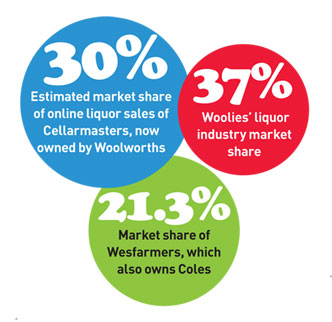
This dominance has enabled the two majors to dictate what brands you can buy. They have delisted most small vineyards and substituted them with a cynical excercise in facadism. There is a plethora of over 240 Private Labels masquerading as boutique wines giving the impression of choice. They are merely made-up attractive wine labels stuck on bottles of mass produced vin ordinaire. From Abbey View to Willowbrook, see the list of fake wine brands for yourself.
Now they are using their data Intelligence to segment and market everything from Private Label credit cards to health insurance. For instance, they use loyalty card tracking of grocery purchases and the knowledge that if you eat red meat you are a better actuarial risk to target the insurance sales process. What insurance company can compete with this big brother view of Australians?
How does a business compete with this onslaught? A study by international branding expert Professor Mark Ritson of Melbourne Business School gives some insight...
The formula for Private Label success
• Lack of perceived differentiation between brands in a category
• Lack of value innovation of incumbent brands
• Increased proportion of price promotion activity
• Available production capacity
• For me products
• Smart retailers
• Competitive retailers
• Concentrated retailers
The power of the retailers in this market allows them to demand more price promotion from brands, which leaves little in their budgets for brand building marketing campaigns or new product innovation. In no time the brand values are hollowed out, leaving the category ripe for Private Label substitution.
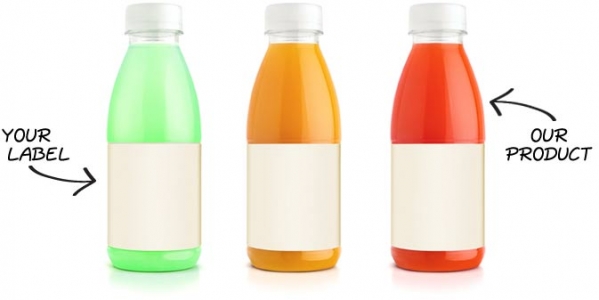
The Seven stages of Private Label dominance
Stage 1: Price-based generics (Home Brand, Black and Gold etc)
Stage 2: Copycat (Penguin vs Puffin biscuits)
Australia has passed here and well into the next stage.
Stage 3: Good, Better, Best (Tesco Value, Tesco, Tesco Finest)
Stage 4: Flanker brands (brand extensions to attract brand 'switchers')
Stage 5: Category leaders (Sainsbury Extra Special Tea Bags)
Stage 6: Non exclusive (expanding beyond the store)
Stage 7: Legal monopoly
The supply side to killing brands
The no-name supplier is offered a carrot to become the stick that wacks the known brands.This business is often an existing maker of their own known brand line. Why would a Heinz for instance supply Woolies Private Label baked beans? This is what attracts them:
- Usually opportunistic origins
- Often based on excess capacity utilisation
- Any contribution over variable costs of production is seen by management as good
- Less profit... but still profit
Where it leads is usually not so positive. Here is what happens when the no-name supplier exceeds production capacity:
- Increased production costs for same or less profit
- Cannibalisation of existing branded product
Gradual strategic 'split':
- From brand builder to PL supplier
- Internal resources get utilised
- An implicit strategic change
Change of business from:
- Brand builder / innovator / consumer focus to
- PL supplier / cost cutter / business customer focus
Private Label and the weaker brands are consolidated:
- As PL grows weaker manufacturer shares decline
- Brand fights brand – not PL
- To maintain brand and shelf presence, 'lesser' products become 'propped' up with disproportionate costs
- Resources become further diluted
- Finally, once mighty brands are de-listed by the duopoly
- The retailer approaches a new potential supplier for PL, and so it all repeats
How high can Private Label go? (How low will brands fall?)
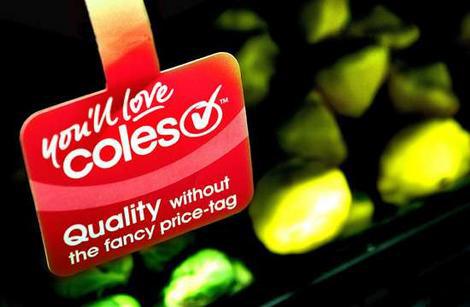
Private Label share in Australia today
23% is current floor
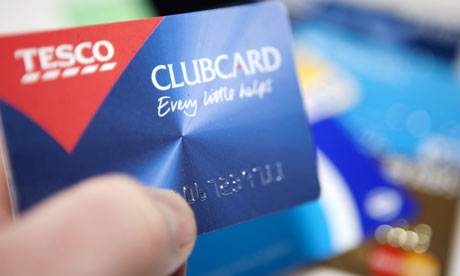
The UK is in the middle
50% Private Label
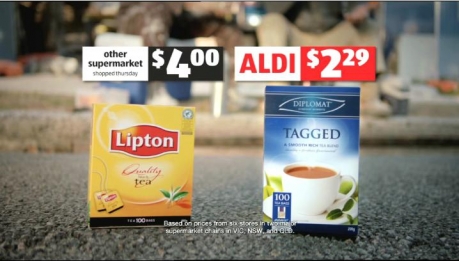
Theoretical ceiling
95% of product in Aldi is Private Label




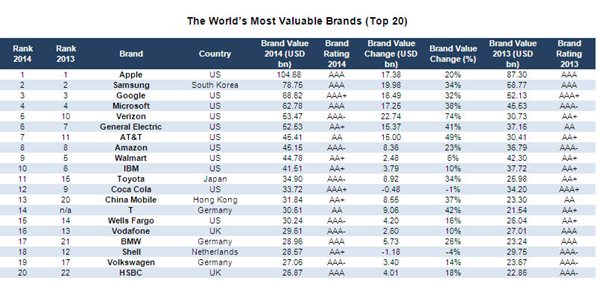




Scan the QR code for our contact details.
Download the Neoreader app.
© COPYRIGHT 2013 UNO marcomms Privacy